Abstract
The power to detect disease-susceptibility loci through linkage analysis using pairs of affected relatives and affected-unaffected pairs is examined. Allelic identity by descent (ibd) for a completely polymorphic marker for sibling, uncle-nephew, grandparent-grandchild, half-sib, and first-cousin pairs is considered. Affected-unaffected pairs generally represent a poor strategy. For single-locus models, ibd depends on lambda R, the risk ratio for type R relatives compared with population prevalence, and the recombination fraction theta. The ibd for grandparent-grandchild pairs is least affected by recombination, followed by sibs, half-sib, uncle-nephew, and first-cousin pairs. For diseases with large lambda values and for small theta values, distant relatives offer greater power. For larger theta values, grandparent-grandchild pairs are best; for small lambda values, sibs are best. Additive and multiplicative multilocus models are considered. For the multiplicative model, the same formulas as in the single-locus model apply, except that lambda iR (for the ith contributing locus) is substituted for lambda R. For the additive model, the deviation from null expectation for ibd is divided among all contributing loci. Compared with the multiplicative model, for an additive model there is usually greater advantage in distant relationships. Multipoint analysis using linked marker loci for affected relative pairs is described. Simultaneous use of multiple markers diminishes the effect of recombination and allows for localization of the disease-susceptibility locus.
Full text
PDF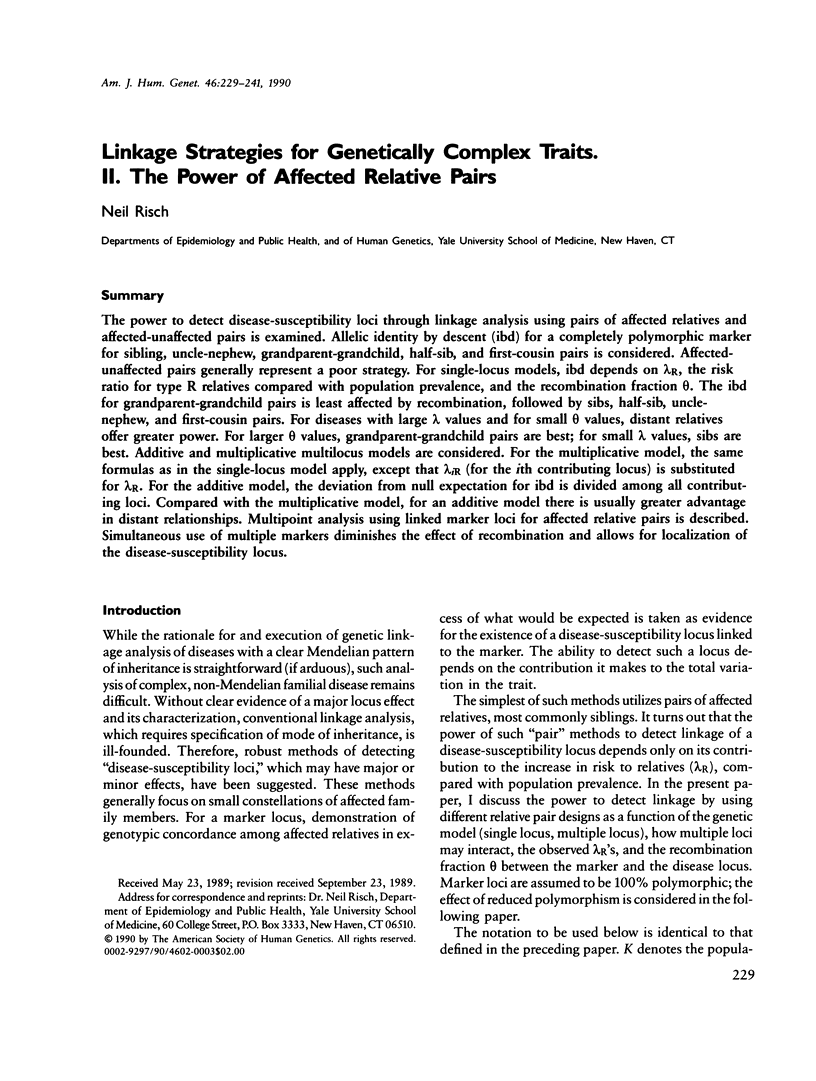
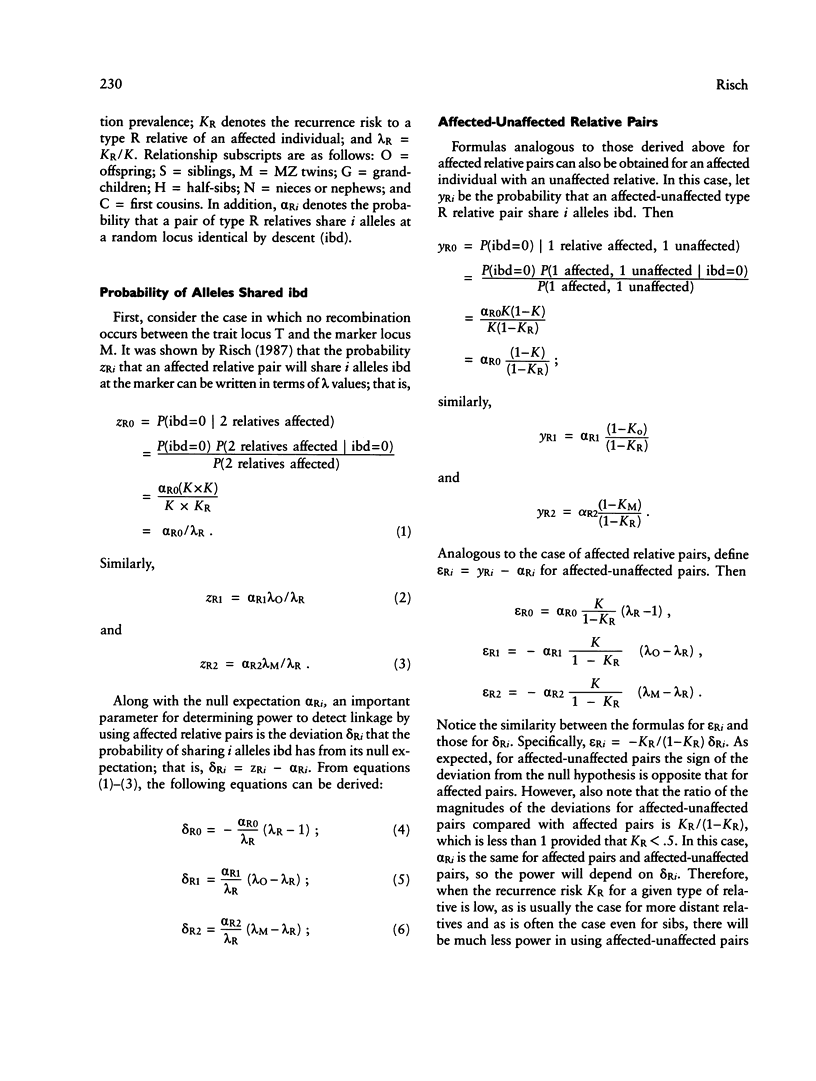
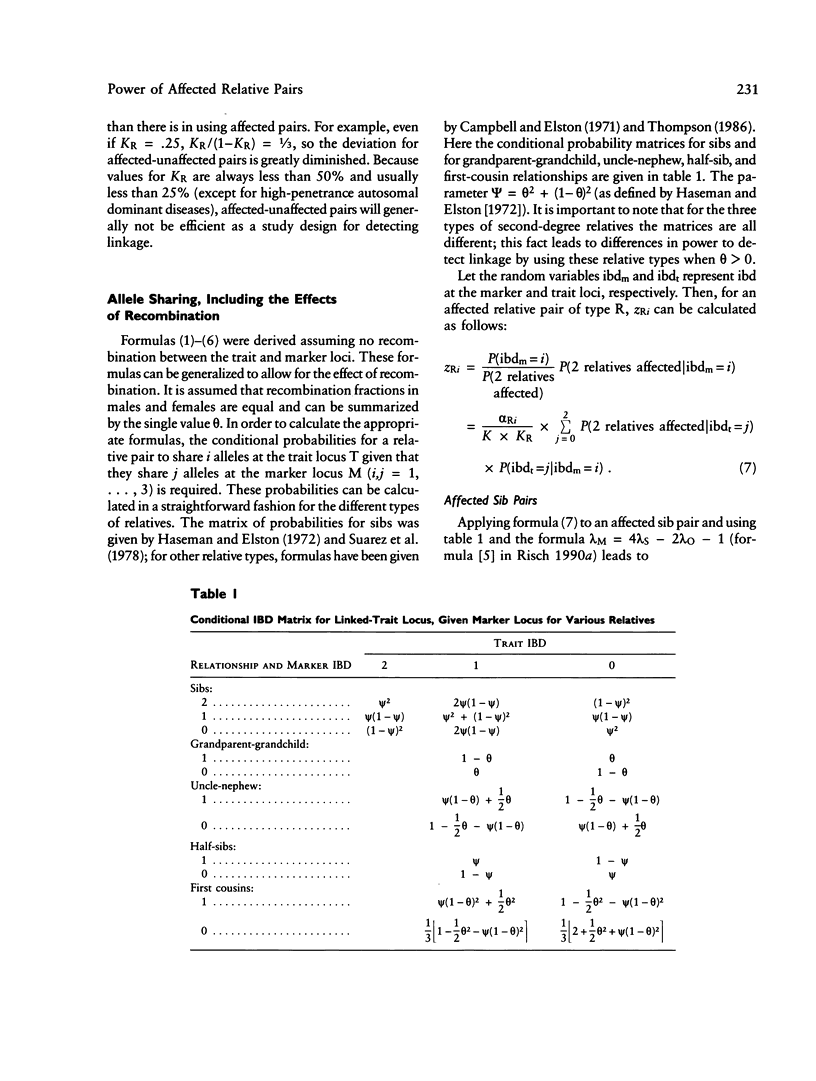
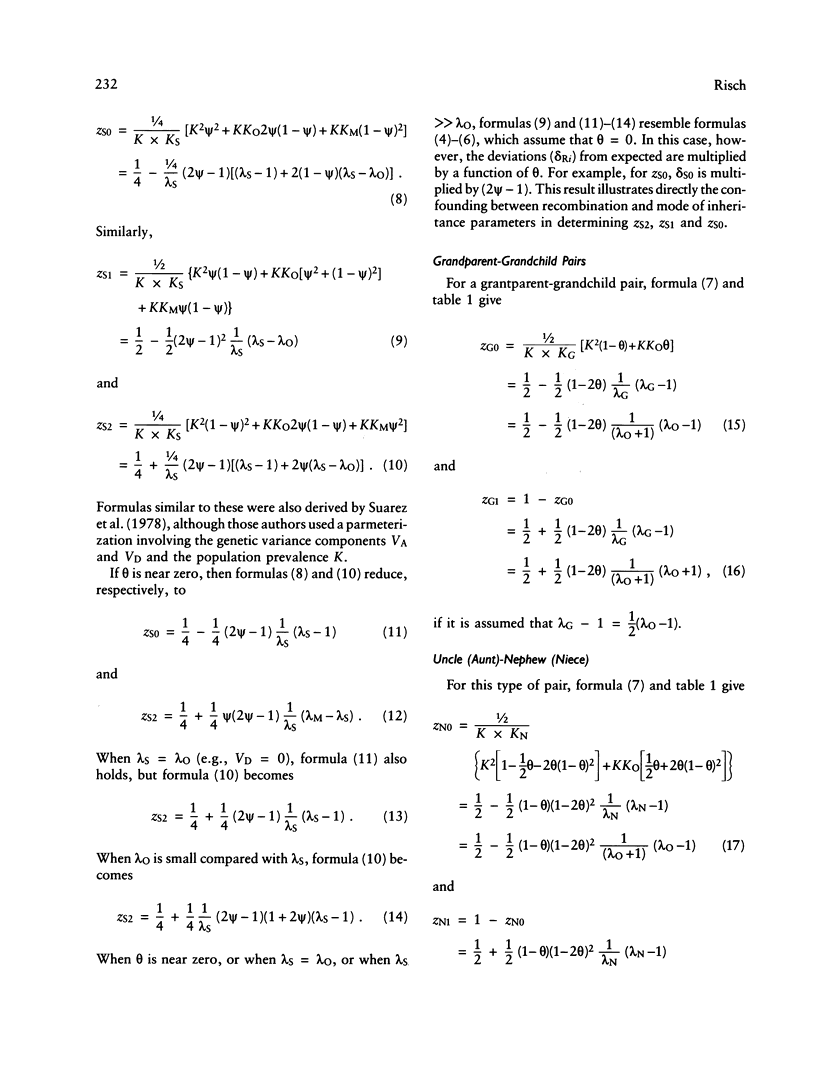
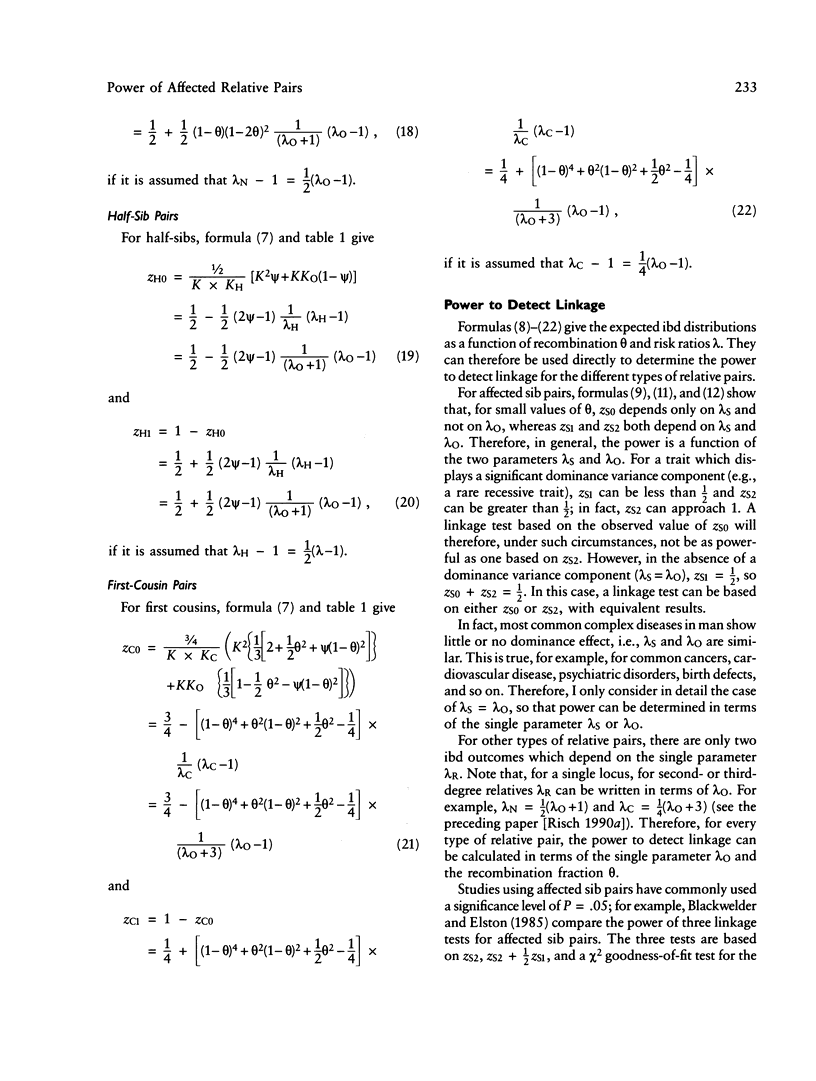
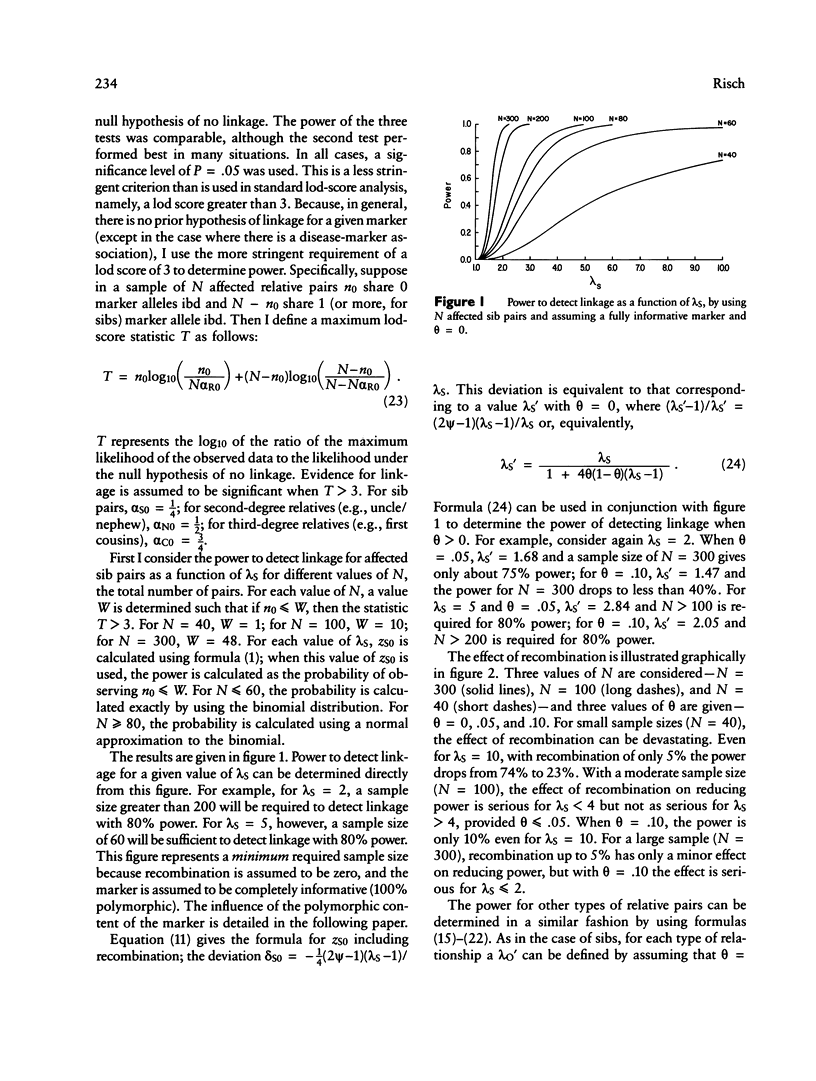
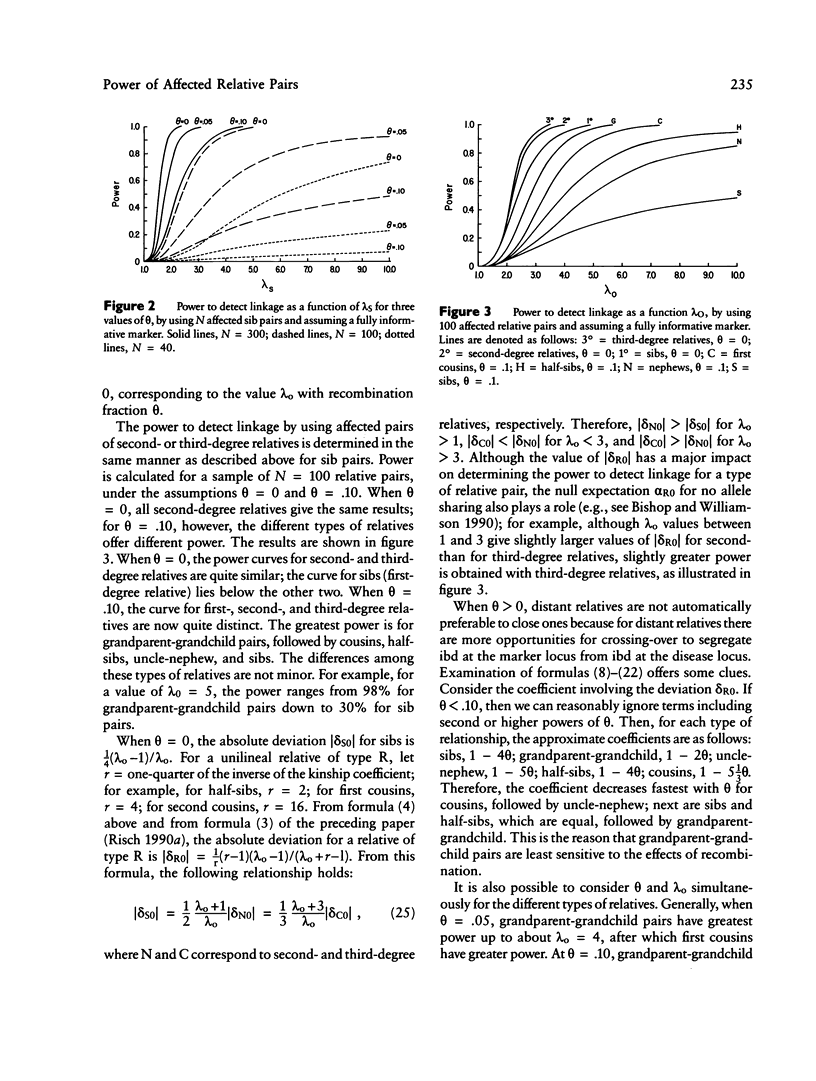
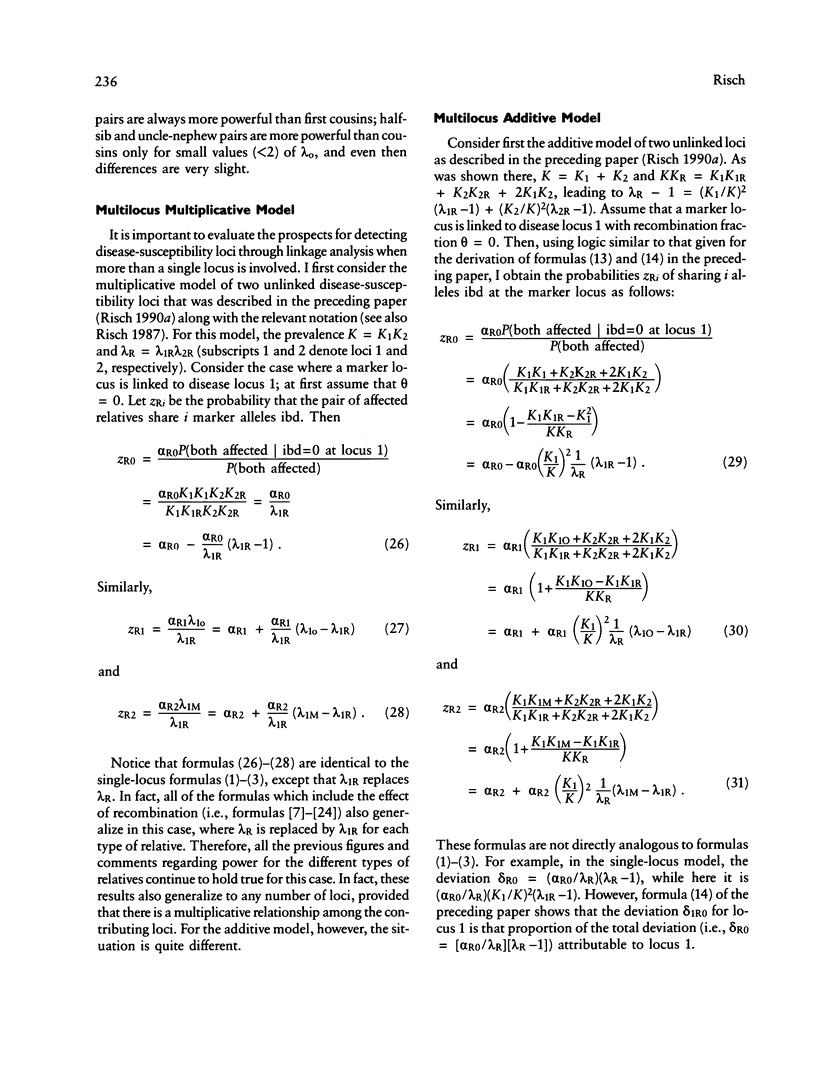
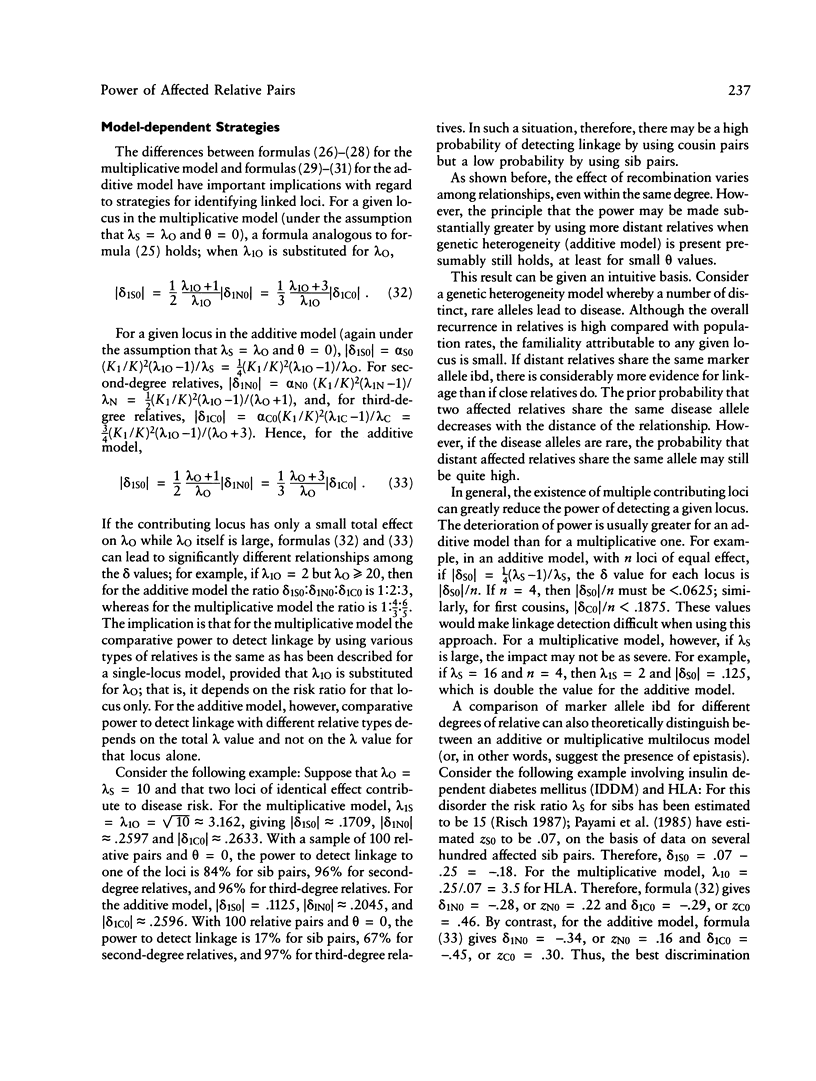
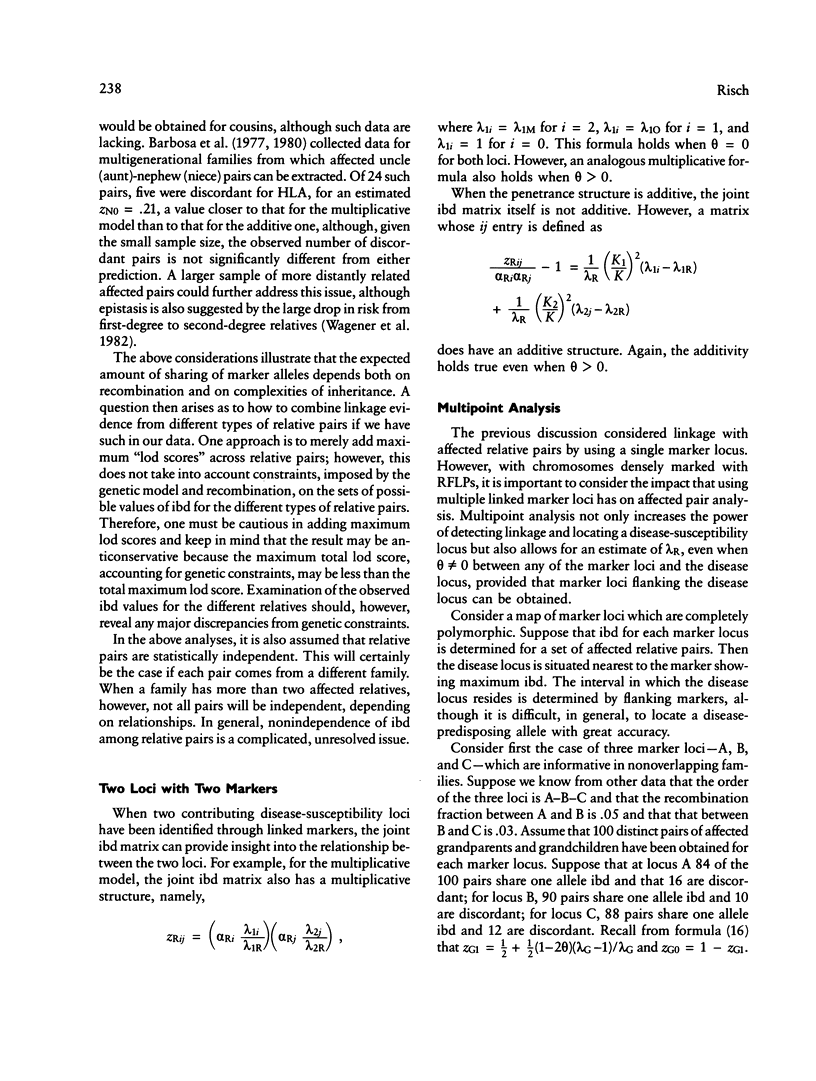
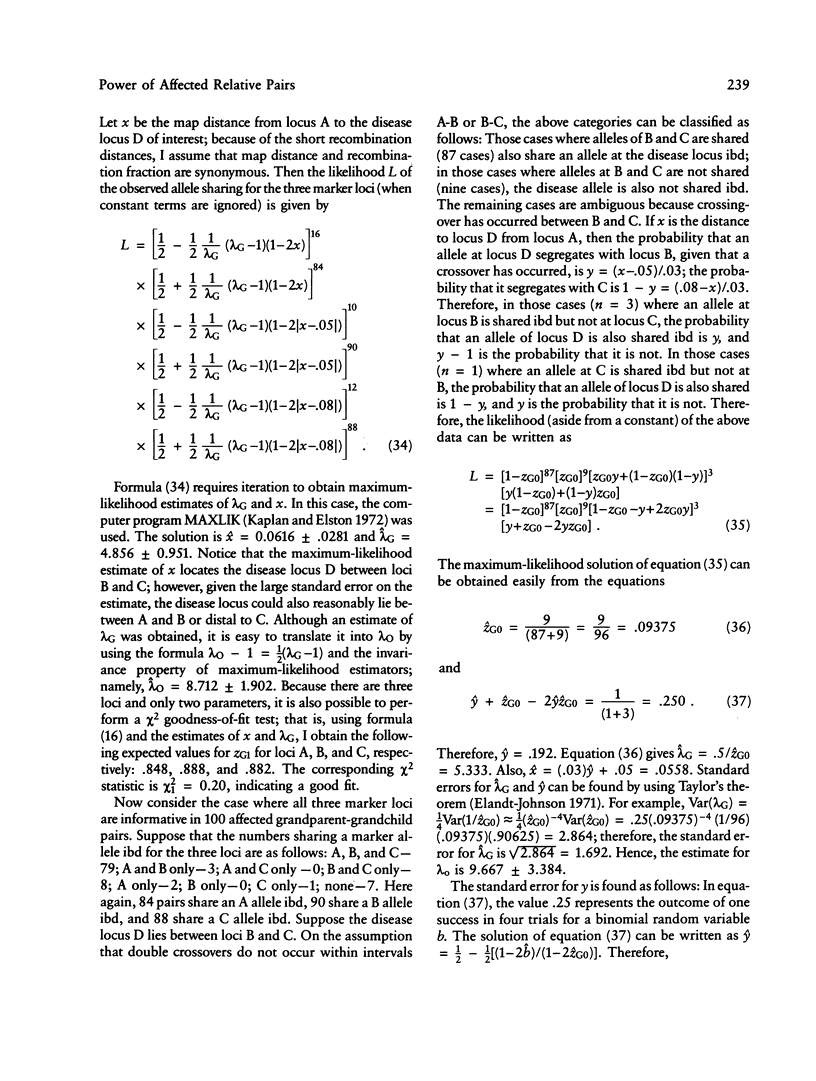
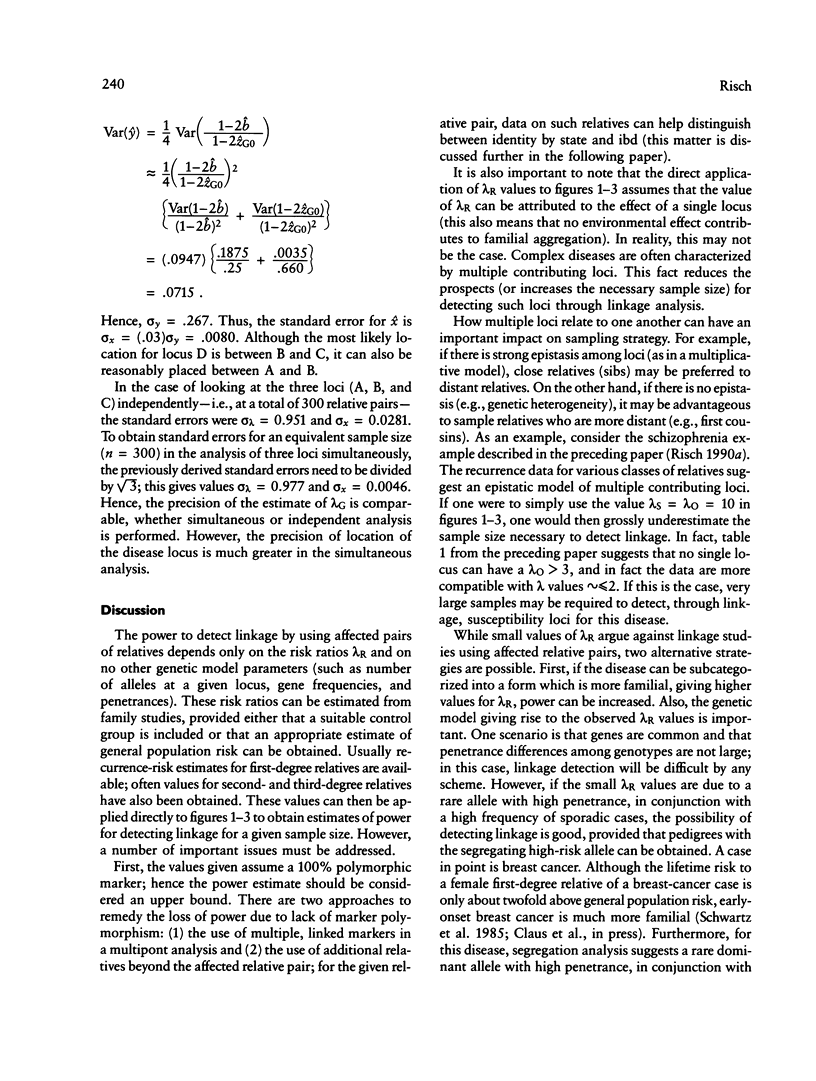
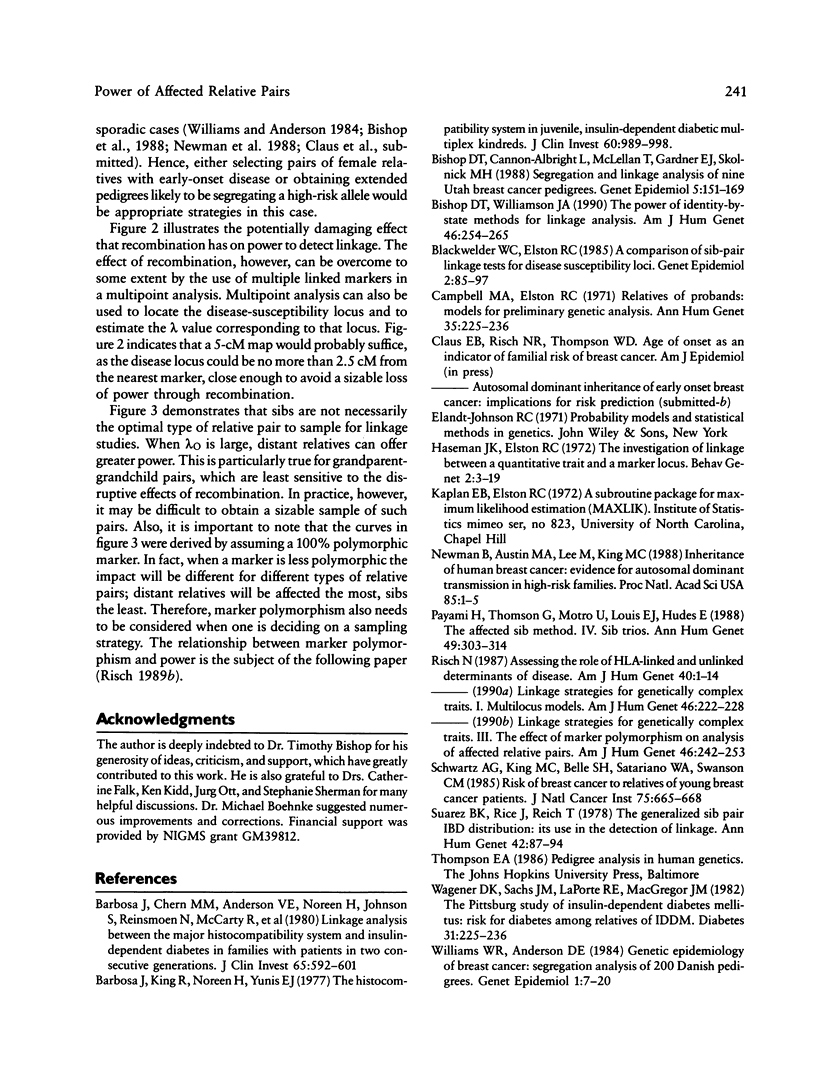
Selected References
These references are in PubMed. This may not be the complete list of references from this article.
- Barbosa J., Chern M. M., Anderson V. E., Noreen H., Johnson S., Reinsmoen N., McCarty R., King R., Greenberg L. Linkage analysis between the major histocompatibility system and insulin-dependent diabetes in families with patients in two consecutive generations. J Clin Invest. 1980 Mar;65(3):592–601. doi: 10.1172/JCI109704. [DOI] [PMC free article] [PubMed] [Google Scholar]
- Barbosa J., King R., Noreen H., Yunis E. J. The histocompatibility system in juvenile, insulin-dependent diabetic multiplex kindreds. J Clin Invest. 1977 Nov;60(5):989–998. doi: 10.1172/JCI108879. [DOI] [PMC free article] [PubMed] [Google Scholar]
- Bishop D. T., Cannon-Albright L., McLellan T., Gardner E. J., Skolnick M. H. Segregation and linkage analysis of nine Utah breast cancer pedigrees. Genet Epidemiol. 1988;5(3):151–169. doi: 10.1002/gepi.1370050303. [DOI] [PubMed] [Google Scholar]
- Bishop D. T., Williamson J. A. The power of identity-by-state methods for linkage analysis. Am J Hum Genet. 1990 Feb;46(2):254–265. [PMC free article] [PubMed] [Google Scholar]
- Blackwelder W. C., Elston R. C. A comparison of sib-pair linkage tests for disease susceptibility loci. Genet Epidemiol. 1985;2(1):85–97. doi: 10.1002/gepi.1370020109. [DOI] [PubMed] [Google Scholar]
- Campbell M. A., Elston R. C. Relatives of probands: models for preliminary genetic analysis. Ann Hum Genet. 1971 Oct;35(2):225–236. doi: 10.1111/j.1469-1809.1956.tb01395.x. [DOI] [PubMed] [Google Scholar]
- Payami H., Thomson G., Motro U., Louis E. J., Hudes E. The affected sib method. IV. Sib trios. Ann Hum Genet. 1985 Oct;49(Pt 4):303–314. doi: 10.1111/j.1469-1809.1985.tb01706.x. [DOI] [PubMed] [Google Scholar]
- Risch N. Assessing the role of HLA-linked and unlinked determinants of disease. Am J Hum Genet. 1987 Jan;40(1):1–14. [PMC free article] [PubMed] [Google Scholar]
- Schwartz A. G., King M. C., Belle S. H., Satariano W. A., Swanson G. M. Risk of breast cancer to relatives of young breast cancer patients. J Natl Cancer Inst. 1985 Oct;75(4):665–668. [PubMed] [Google Scholar]
- Sheshberadaran H., Payne L. G. Protein antigen-monoclonal antibody contact sites investigated by limited proteolysis of monoclonal antibody-bound antigen: protein "footprinting". Proc Natl Acad Sci U S A. 1988 Jan;85(1):1–5. doi: 10.1073/pnas.85.1.1. [DOI] [PMC free article] [PubMed] [Google Scholar]
- Suarez B. K., Rice J., Reich T. The generalized sib pair IBD distribution: its use in the detection of linkage. Ann Hum Genet. 1978 Jul;42(1):87–94. doi: 10.1111/j.1469-1809.1978.tb00933.x. [DOI] [PubMed] [Google Scholar]
- Williams W. R., Anderson D. E. Genetic epidemiology of breast cancer: segregation analysis of 200 Danish pedigrees. Genet Epidemiol. 1984;1(1):7–20. doi: 10.1002/gepi.1370010104. [DOI] [PubMed] [Google Scholar]


